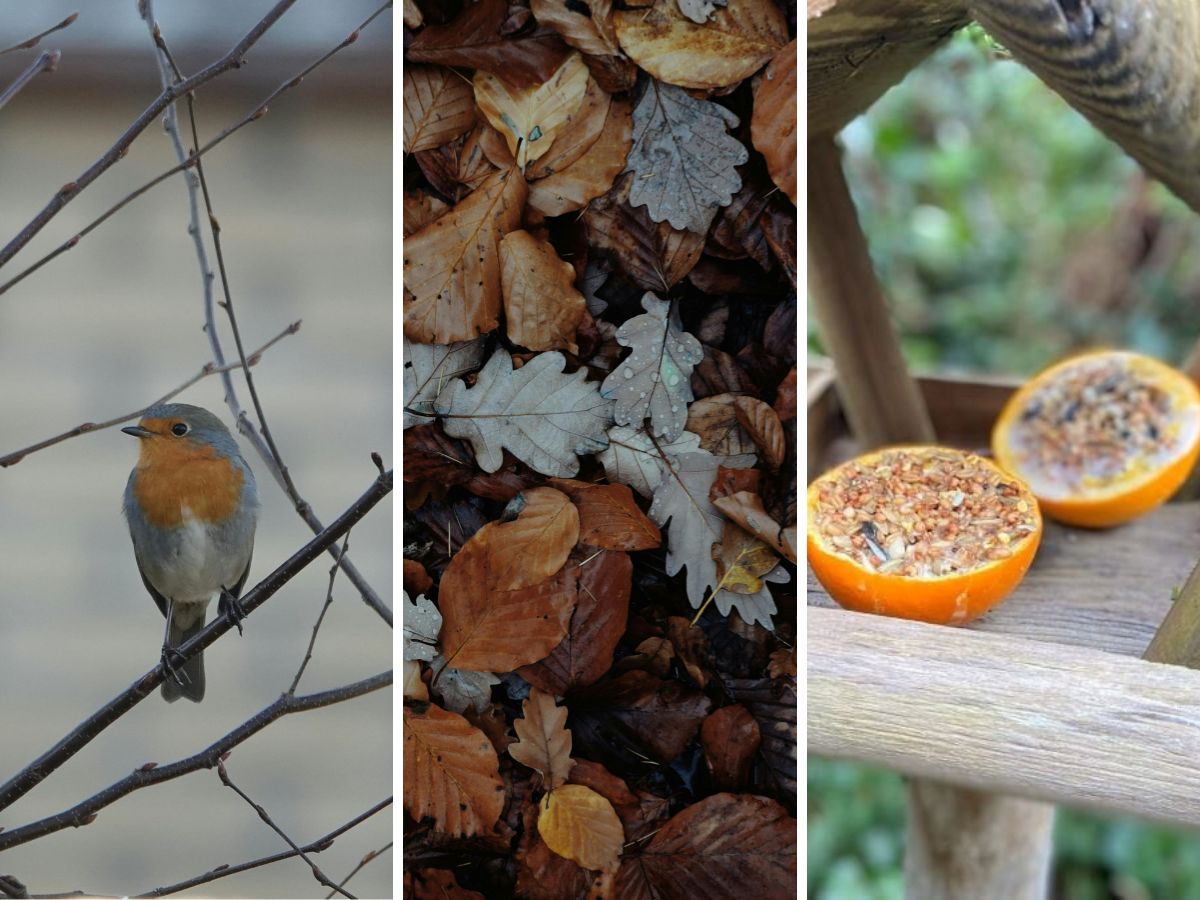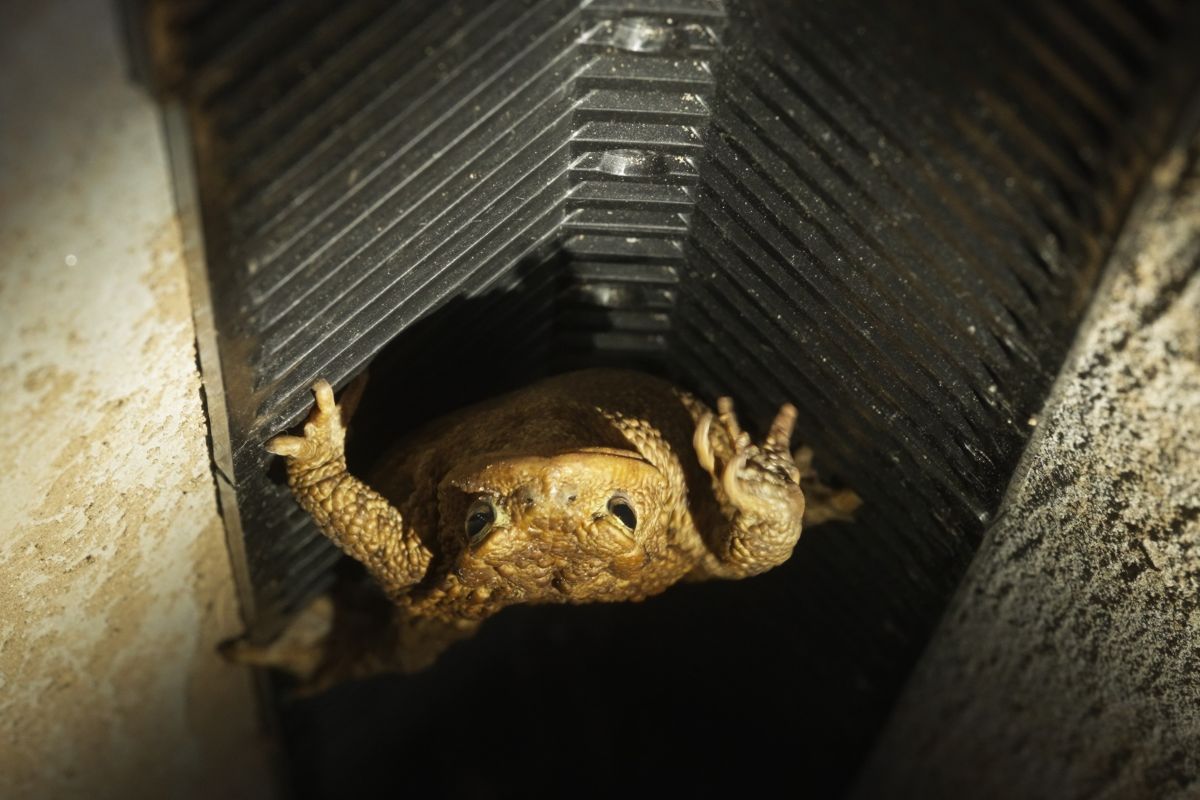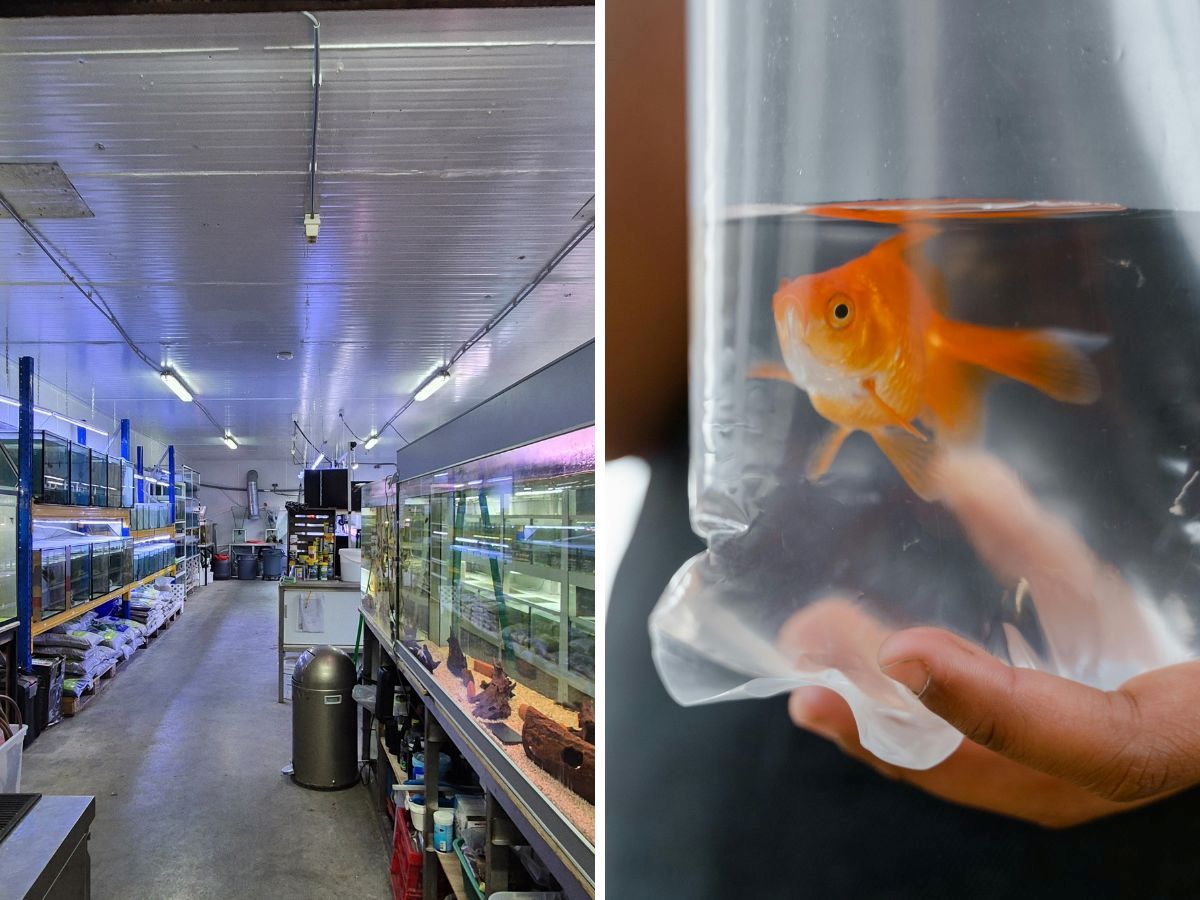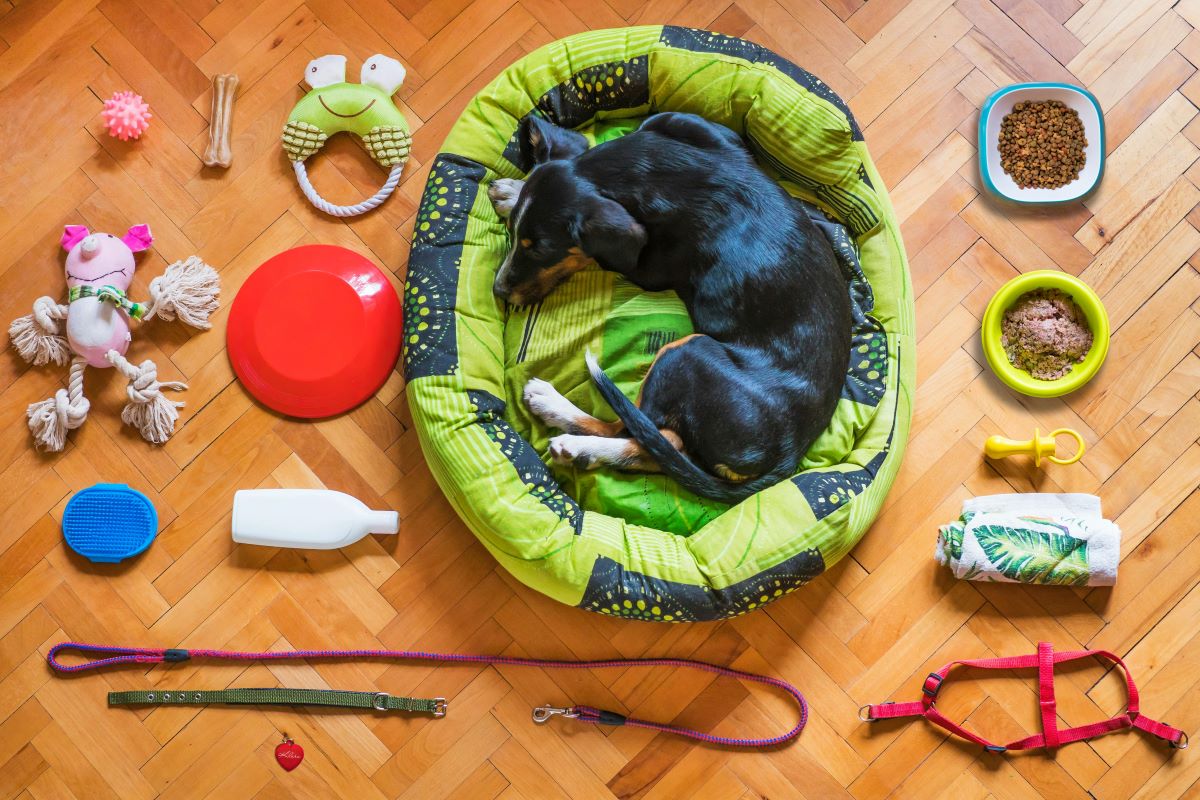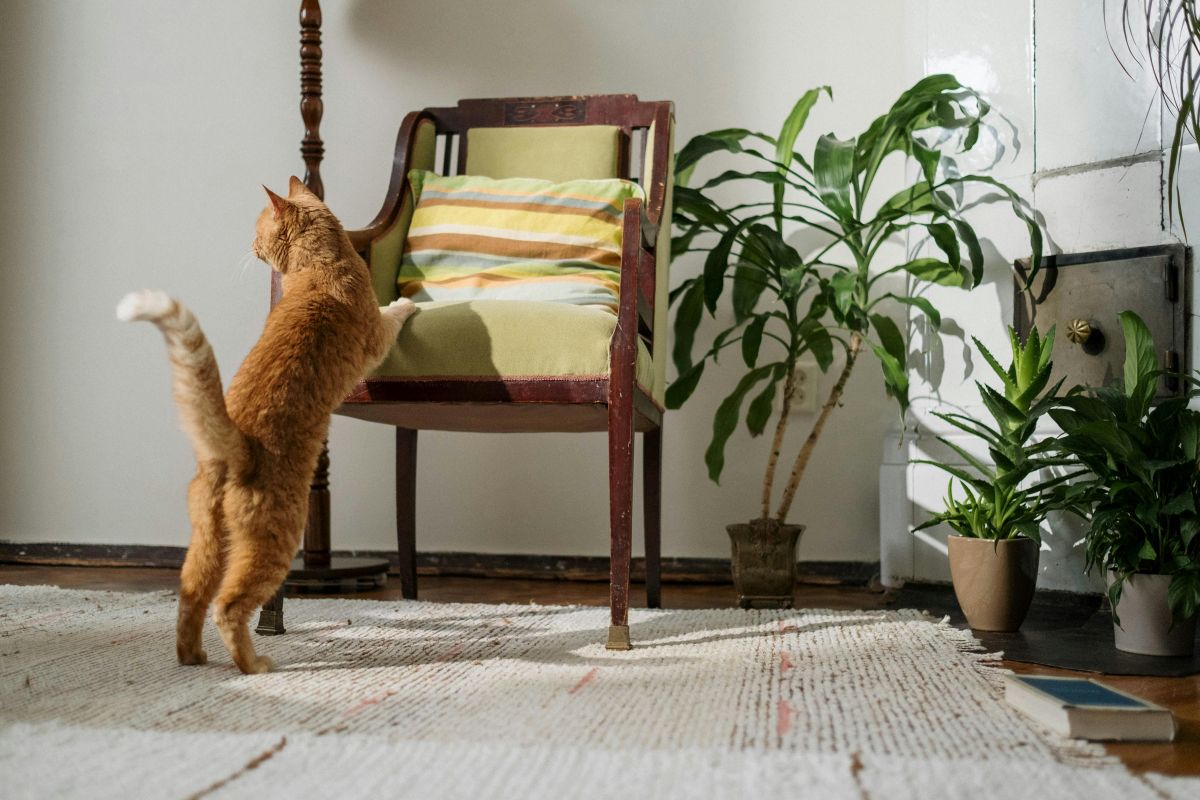When the leaves fall from the trees, many people think of winterising the garden (read trimming and clearing away the leaves) and then sitting inside, content. Did you know that by doing just the opposite, you can boost biodiversity in your garden? Less = more. More greenery, more animals, more soil life, more biodiversity.
‘Winterising’ garden’
Animals and insects find it increasingly difficult all year round due to raked and petrified gardens. There is barely to no food to be found there, let alone shelter to overwinter. By providing a shelter for all kinds of beneficial insects in winter, you will soon have free garden workers in spring. They keep your garden pest-free and keep your soil fertile. They provide balance in your garden, reducing the need for you to intervene. Useful animals such as ladybirds, wild bees, beetles, toads and woodlice, need to rest in winter. They only stay in your garden if you provide food and suitable shelter. What should you do to improve biodiversity and, most importantly, what should you leave? I have some handy tips to make your garden really winter-ready.
Help the animals, do less!
In a sustainable garden, there is no such thing as waste. So my first tip is: keep your tidying urge in check and leave everything lying around. There is no need at all to winterise the garden. All the stems, leaves and twigs make excellent hiding places for all kinds of animals. Moreover, this organic material also feeds your soil and stops weeds in spring. So it saves you a lot of work and you really do something good.
Winterising your garden: think about this!
Tidying up your garden less, so that's the message this winter if you want to improve biodiversity. Of course, with the time you save, you can do a number of other things to help animals, through the winter.
Helping birds by choosing the right plants
Birds, such as the goldfinch, sparrow, chaffinch and greenfinch, eat the seeds of spent flowers. This is an important food source in winter, as are berries and fruits. You can take this into account when choosing planting for your garden. Good plants for this are: sunshade, sunflower, fruit trees and woodland strawberry. You can also choose plants that have a nice winter silhouette, finished flowering and coated in ice these plants are still very beautiful. Plants you can think of are: Hemlock, big pimpernel and ornamental grasses. They don't collapse like a plum pudding either, they give structure to your border. So it's win-win, both pleasing to the eye and nice for the birds. Preferably choose indigenous plants (why read here), such as (bush) ivy, yew or dog rose. On the site of Bird protection Netherlands is to read that there are basic principles for a bird-friendly garden. You can remember these by thinking of four Vs: food, safety, breeding and variety. If you want to attract a specific bird to your garden, take a look at the Bird Conservancy's site to see what this bird needs to come to your garden.
Autumn and winter is best timing for planting
Autumn and winter (not with frost) are the best time to plant new plants and trees in your garden. In autumn, the sap flows in perennials, shrubs and trees stop, while the roots are still active. When you plant in autumn, the soil temperature is still a bit higher. As a result, the roots are still active and have a few months to take root. This has the advantage that they have a head start in spring and can immediately look for nutrition and water. The second advantage is that much less water needs to be given during the first year in the new location.
Hedgehogs in the garden
Another fine animal in your garden is the hedgehog. Besides being a beautiful animal to look at, the hedgehog also eats snails, caterpillars and maggots. Hedgehogs like to hibernate in a pile of leaves. Make some piles here and there in your garden is also a sustainable garden tip. Hedgehogs are finding it increasingly difficult because we humans are increasingly paving our gardens and enclosing them with fences and walls. This prevents them from walking in, out and through the gardens. If you want hedgehogs in your garden, provide a hedgehog gate, make it possible for them to get in and out of your garden. Cluttered corners are essential for various animals and certainly for the hedgehog as well. They find food and a warm hiding place there. However, it is important to actually leave these spots alone. Installing a hedgehog house is also a good option. I myself made this one from recycled material, a instruction for a hedgehog house can also be found online. More tips to help hedgehogs in your garden read this article.



A hedgehog in the garden and places in the garden where birds can find some extra food in winter. You can make the bird food in the right picture yourself.
Trees in the garden
If you don't yet have a tree in your garden yourself, take another look at its potential. The fallen leaves provide free ground cover, nutrition for your soil, shelter for animals and keep weeds at bay. In addition, a tree also provides cooling and shade in the increasingly hot summers. If this is not possible and you still want to enjoy the benefits of leaves in your garden, take a walk around your hometown. You often see leaf baskets in autumn, where you can pick up this free gold.
Don't throw away garden waste!
You often prune certain trees or shrubs once or twice a year. When you do it depends on the species. What do you do with that pruning waste? To the recycling centre or maybe in your container/clutter? A shame, because you can reuse this material too. If you have a large garden, you can shred the branches with a shredder, for example. You can distribute the wood chips in the borders and they have the same advantages as leaves on the ground. If you have a smaller garden, you could cut the branches small by hand and drop them on the soil (mulching). Cut grass can also be distributed between your plants in the borders.
Winterising your garden: make your own branch trellis
What I personally always really like is making a branch trellis. You put a couple of stakes in the ground and in between you put branches you have pruned. Many birds find shelter in these in winter and sometimes even build their nests there in spring. Insects, such as caterpillars, also settle between the branches, which in turn provide food for the birds. Hedgehogs and amphibians also like a branch ledge. You can make a branch ledge as big or small as you like. It could even serve as a natural garden fence.
Compost heap
If you still have pruning waste left over after all this, consider building a compost heap. After all, healthy soil also makes for healthy plants that are less likely to get sick. It is sustainable because you recycle kitchen and garden waste and you don't have to go out and buy bags of compost. The latter saves in your wallet and on transport (emissions).



A bee hotel, a branch ledge and a bin to compost your own GFT waste: all good ideas for a strong garden in winter! Photo branch ledge, courtesy of Anke Grunefeld.
Additional tips for more life in your garden
- Larger blocks of wood can be reused to make an insect hotel, or leave them lying around in a cluttered corner of the garden. Such a clutter corner can be fine under a bush or tree, so you don't have to look at it yourself.
- Besides hiding and feeding places, animals also need water. You might think of giving extra water especially in summer, but this is especially important in winter too. This can be done by placing a small drinking bowl.
- And one last tip, a pile of stones is also a good place for many overwinterers. These can often be picked up for free on Marktplaats.
- Autumn is a good time to clean out the nest boxes in your garden and hang new ones. The breeding season is over so you can do this without risk now.
So in a green winter garden, there is no such thing as waste. You can reuse almost everything from your garden to improve your soil and welcome animals and insects to your garden. So super sustainable!
More sustainable gardening tips from thegreenlist.nl
- Also see: help nature, buy poison-free plants.
- Also see: how does light pollution affect nature?
- Also see: plant organic flower bulbs (best time to plant is autumn!)
Photo credits: main image: Patrick Droog (bird) (Pexels), Jara (leaves) (Pexels), Melanie de Oliviera, other: Anke Grunefeld, Pixel2013 (Pixabay), Eva Bronzini (Pexels), Amanda Sniekers and Melanie de Oliveira.

